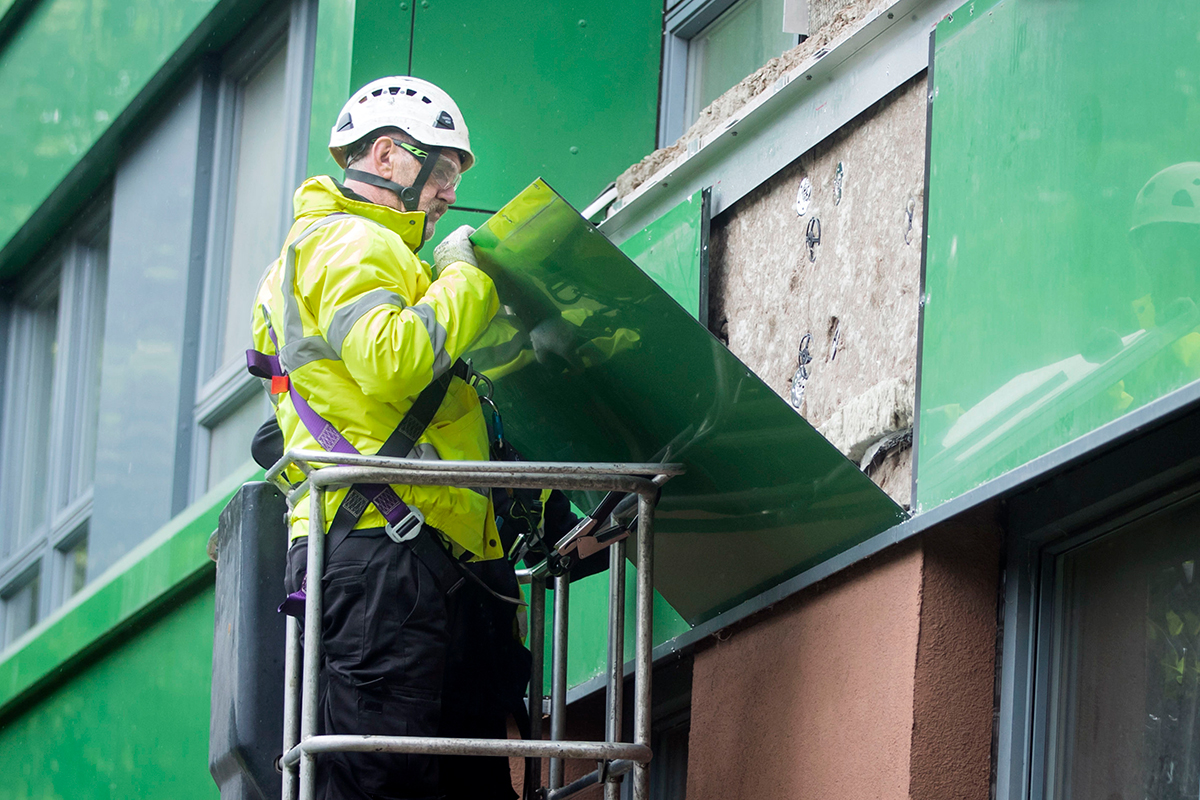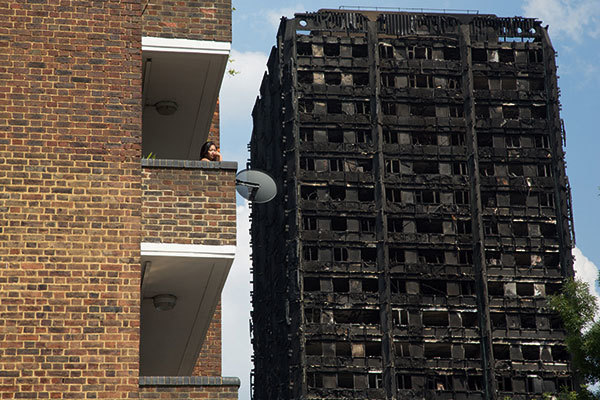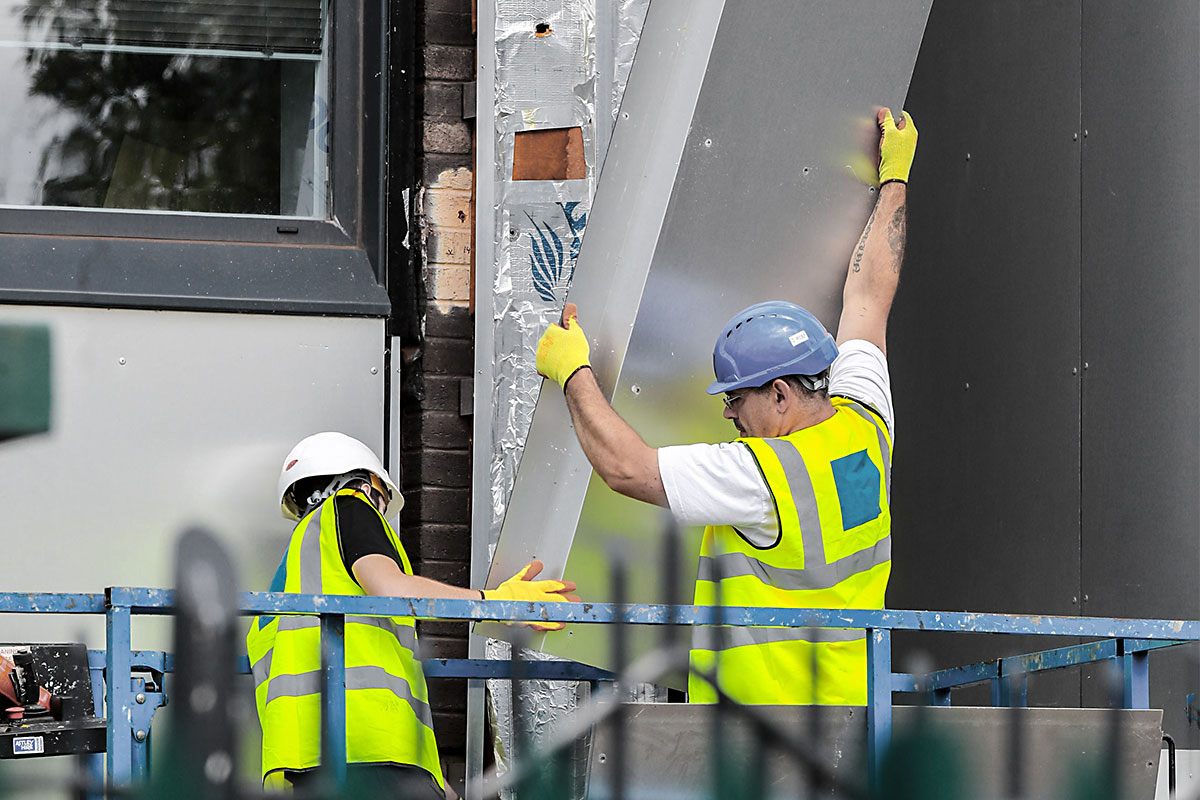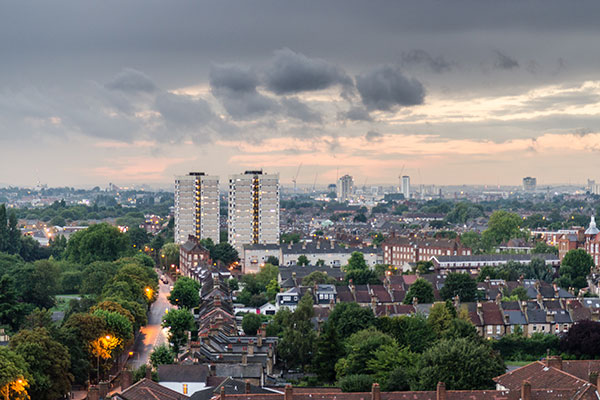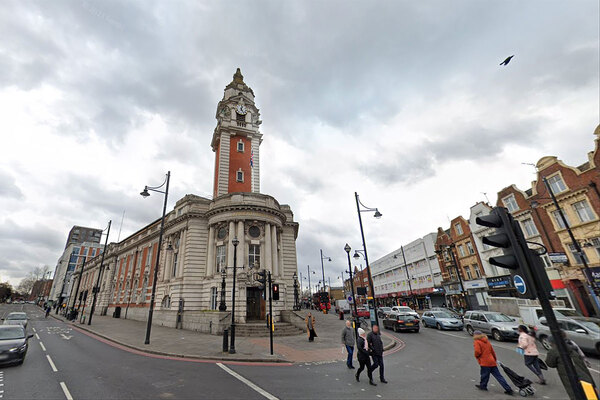You are viewing 1 of your 1 free articles
Government defends use of barriers three times stronger than minimum for fire test
The government has defended its large-scale cladding tests, despite the use of fire protections three times stronger than those commonly used in the industry.
In the aftermath of the Grenfell Tower fire in June, the government commissioned the Building Research Establishment (BRE) to test seven combinations of insulation and aluminium cladding.
The tests were designed by Booth Muirie, a subsidiary of insulation firm Kingspan, and resulted in passes for three systems and four failures.
But the specification of the tests shows the cavity barrier used in all of the tests was rated to provide 90 minutes’ protection from flame and 30 minutes’ insulation from heat.
However, in the government’s ‘Approved Document B’ which sets out how to comply with fire safety guidance, cavity barriers are only required to offer 30 minutes resistance and 15 minutes insulation.
This means the tests had barriers three times as resistant as those which can legally be used in the industry.
Last week, Inside Housing revealed that in alternative tests run by the Fire Protection Authority (FPA) on behalf of the insurance industry, flames were found to rip through protections in cavities much faster than in the government test.
But this week a spokesperson for the Ministry of Housing, Communities and Local Government defended the testing process.
A spokesperson said: “Nothing is more important than keeping people safe. The tough and rigorous large-scale fire safety tests we used were developed by the British Standards Institution.
“We commissioned these tests after receiving advice from our independent expert panel on fire safety, who worked closely with the sector.”
Earlier this week, Rockwool, a mineral wool insulation company, also questioned the testing.
Gilles Maria, senior vice-president at the company, questioned the decision to place thermometers directly above fire barriers – protecting them from the heat and flames.
As the system was deemed to fail the test if the temperature rose beyond a certain level within the first 15 minutes, protecting the thermometers could have had a baring on the results, he claimed.
In response, a spokesperson for Kingspan stressed that the test was designed in the same way as a previous test in October 2016, which Booth Muirie had no influence on.
The spokesperson said: “This test was chosen as a template because it was the only one that the parties involved were aware of having been carried out on a flat-panel ACM [aluminium composite material], comparable to that used on Grenfell Tower.”
Kingspan added that the results of the testing showed aluminium cladding, rather than insulation, were the “key factor” in the safety of a cladding system.
Never Again campaign
Inside Housing has launched a campaign to improve fire safety following the Grenfell Tower fire
Never Again: campaign asks
Inside Housing is calling for immediate action to implement the learning from the Lakanal House fire, and a commitment to act – without delay – on learning from the Grenfell Tower tragedy as it becomes available.
LANDLORDS
- Take immediate action to check cladding and external panels on tower blocks and take prompt, appropriate action to remedy any problems
- Update risk assessments using an appropriate, qualified expert.
- Commit to renewing assessments annually and after major repair or cladding work is carried out
- Review and update evacuation policies and ‘stay put’ advice in light of risk assessments, and communicate clearly to residents
GOVERNMENT
- Provide urgent advice on the installation and upkeep of external insulation
- Update and clarify building regulations immediately – with a commitment to update if additional learning emerges at a later date from the Grenfell inquiry
- Fund the retrofitting of sprinkler systems in all tower blocks across the UK (except where there are specific structural reasons not to do so)
We will submit evidence from our research to the Grenfell public inquiry.
The inquiry should look at why opportunities to implement learning that could have prevented the fire were missed, in order to ensure similar opportunities are acted on in the future.
